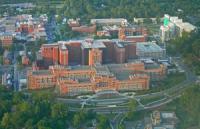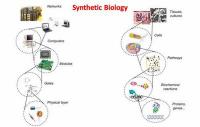-
Dozens of safety violations found at U.K. biolabs
The U.K. Health and Safety Executive (HSE) said that there have been more than 40 incidents at high-security biolabs between June 2015 and July 2017. Mistakes led to staff being infected and falling ill at labs run by hospitals, private companies, and Public Health England.
-
-
Ban on deadly pathogen research lifts, but controversy remains
“Those who support such research think that it is necessary to develop strategies to fight rapidly evolving pathogens that pose a threat to public health, such as the flu virus, the viruses causing Middle East respiratory syndrome (MERS) and severe acute respiratory syndrome (SARS), or Ebola,” says Marc Lipsitch of Harvard Chan School. “But others, like myself, worry that human error could lead to the accidental release of a virus that has been enhanced in the lab so that it is more deadly or more contagious than it already is. There have already been accidents involving pathogens. For example, in 2014, dozens of workers at a U.S. Centers for Disease Control and Prevention lab were accidentally exposed to anthrax that was improperly handled. Another accident like that—if it involved a virus that was both newly created and highly contagious—has the potential to jeopardize millions of people.”
-
-
Congressional amendments restore Maryland BioLab4 funding
Members of the Maryland congressional delegation attached amendments to the Homeland Security and Defense Department authorization bills to prevent the closure of the National Biodefense Analysis and Countermeasures Center (NBACC) at Fort Detrick, Maryland. President Trump’s budget for 2018 had eliminated funding for NBACC as part of cutting the budget of DHS Science and Technology Directorate (S&T) by 28 percent. At the end of May 2017, the research center received a letter from DHS stating that the facility’s closing procedures should start on 1October, with anticipated decommissioning by 30 September 2018.
-
-
Harnessing AI to catch disease fast
Up to 27,000 microbiology laboratories around the world could benefit from a ground-breaking automation technology. The Automated Plate Assessment System (APAS) can automatically screen microbiology culture plates for the presence of various disease-causing pathogens, revolutionizing the workflow in modern microbiology labs. The smart software uses artificial intelligence to analyze microbial growth in much the same way as a microbiologist would, but with faster and more consistent results.
-
-
Identifying vulnerabilities posed by synthetic biology
Given the possible security vulnerabilities related to developments in synthetic biology – a field that uses technologies to modify or create organisms or biological components – a new report by the National Academies of Sciences proposes a framework to identify and prioritize potential areas of concern associated with the field. “While biotechnology is being pursued primarily for beneficial and legitimate purposes, there are potential uses that are detrimental to humans, other species, and ecosystems,” says one of the report’s authors.
-
-
Biomedical research community should build resilience to disasters
The academic biomedical research community should improve its ability to mitigate and recover from the impacts of disasters, says a new report from the National Academies of Sciences. The consequences of recent disasters, from hurricanes to cyberattacks, have shown that the investments of the U.S. federal government and other research sponsors — which total about $27 billion annually — are not uniformly secure. “Continuing scientific advancement and the promise of future discoveries will require a commitment to resilience — and an unparalleled partnership across the emergency management and academic research sectors,” says one of the report’s authors.
-
-
House passes bill to prevent sale of Plum Island to highest bidder
The House of Representatives on 25 July passed a bipartisan bill, the Plum Island Preservation Act (H.R. 2182), which would prevent the sale of Plum Island by the federal government to the highest bidder. H.R. 2182, which you can view here, was sponsored by Representative Lee Zeldin (R-New York), and has received unanimous support from the Long Island and Connecticut House delegations, as well as a coalition of over sixty-five local and national environmental groups.
-
-
Lawmaker criticizes closure of biodefense lab
President Trump’s FY2018 budget, released last week, zeroes out funding for the National Biodefense Analysis and Countermeasures Center (NBACC) in Frederick, Maryland and calls for its closure. NBACC, operated by DHS, supports preparedness planning, intelligence assessments and bio-forensic analysis. The lab often assists the FBI in investigating bioterrorism and bio-crime and employs over 180 people.
-
-
Study: NIH funding generates large numbers of private-sector patents

Research grants issued by the National Institutes of Health (NIH) contribute to a significant number of private-sector patents in biomedicine, according to a new study. The study, published in the journal Science, examines twenty-seven years of data and finds that 31 percent of NIH grants, which are publicly funded, produce articles that are later cited by patents in the biomedical sector. “The impact on the private sector is a lot more important in magnitude than what we might have thought before,” says one of the researchers.
-
-
Bill proposes sea mammal protection zone around Plum Island
Three Long Island lawmakers on 1 June introduced a bill which would create a marine mammal and sea turtle protection zone around Plum Island and two other environmentally sensitive eastern Islands. The bill is expected to get a full vote in the legislature next week.
-
-
House temporarily halts sale of Plum Island
New York and Connecticut lawmakers who have been campaigning against the sale of Plum Island by the federal government, have won an impressive victory as the U.S. House of Representatives voted unanimously on Monday to halt efforts to sell the property, at least temporarily. Plum Island, located of the north-eastern tip of Long Island, has for decades housed a high-security biolab in which research into deadly animal diseases pathogens. The aging lab is closing, and its operations will be moved to a modern high-security lab being built in the campus of Kansas State University.
-
-
Plum Island may be turned into a national park rather than sold to developers

Members of the New York and Connecticut congressional delegations announced on Friday a plan to launch a study of Plum Island’s natural and historic resources, saying the plan is one step toward halting the sale of the island to developers. In 2009 DHS said the island would be sold to developers to help fund the new BioLab Level 4 on the campus of Kansas State University, which is set to open in 2022.
-
-
DHS S&T launches $100,000 prize competition to support NBAF facility
DHS S&T announced the National Bio and Agro-Defense Facility (NBAF) Think and Do Challenge, a prize competition that seeks ideas to leverage NBAF resources in order to conduct research to protect the nation’s animal agricultural industry and public health. S&T says that it will award up to $100,000 to help fund the development or implementation of winning submissions through the NBAF Think and Do Challenge, under the authority of the America COMPETES Act.
-
-
U.S. defense agencies dominate federal synthetic biology research

A new analysis finds the Defense Department and its Defense Advanced Research Projects Agency (DARPA) fund much of the U.S. government’s research in synthetic biology, with less than 1 percent of total federal funding going to risk research. Between 2008 and 2014, the United States invested approximately $820 million dollars in synthetic biology research. In that time period, the Defense Department became a key funder of synthetic biology research. DARPA’s investments, for example, increased from near zero in 2010 to more than $100 million in 2014 — more than three times the amount spent by the National Science Foundation (NSF).
-
-
New book details safety, security methods for biosciences sites
Recent mishaps at laboratories which mishandled potentially dangerous biological substances and the transmission of the Ebola virus in a U.S. hospital are symptoms at bioscience facilities that two Sandia National Laboratories researchers think could be prevented by implementing the practices in a new book on biorisk management. The new book, Laboratory Biorisk Management: Biosafety and Biosecurity, is the first full-length manuscript on the detailed implementation of biorisk management.
-
- All
- Regional
- Water
- Biometrics
- Borders/Immig
- Business
- Cybersecurity
- Detection
- Disasters
- Government
- Infrastructure
- International
- Public health
- Public Safety
- Communication interoperabillity
- Emergency services
- Emergency medical services
- Fire
- First response
- IEDs
- Law Enforcement
- Law Enforcement Technology
- Military technology
- Nonlethal weapons
- Nuclear weapons
- Personal protection equipment
- Police
- Notification /alert systems
- Situational awareness
- Weapons systems
- Sci-Tech
- Sector Reports
- Surveillance
- Transportation
Advertising & Marketing: advertise@newswirepubs.com
Editorial: editor@newswirepubs.com
General: info@newswirepubs.com
2010-2011 © News Wire Publications, LLC News Wire Publications, LLC
220 Old Country Road | Suite 200 | Mineola | New York | 11501
Permissions and Policies
Editorial: editor@newswirepubs.com
General: info@newswirepubs.com
2010-2011 © News Wire Publications, LLC News Wire Publications, LLC
220 Old Country Road | Suite 200 | Mineola | New York | 11501
Permissions and Policies
